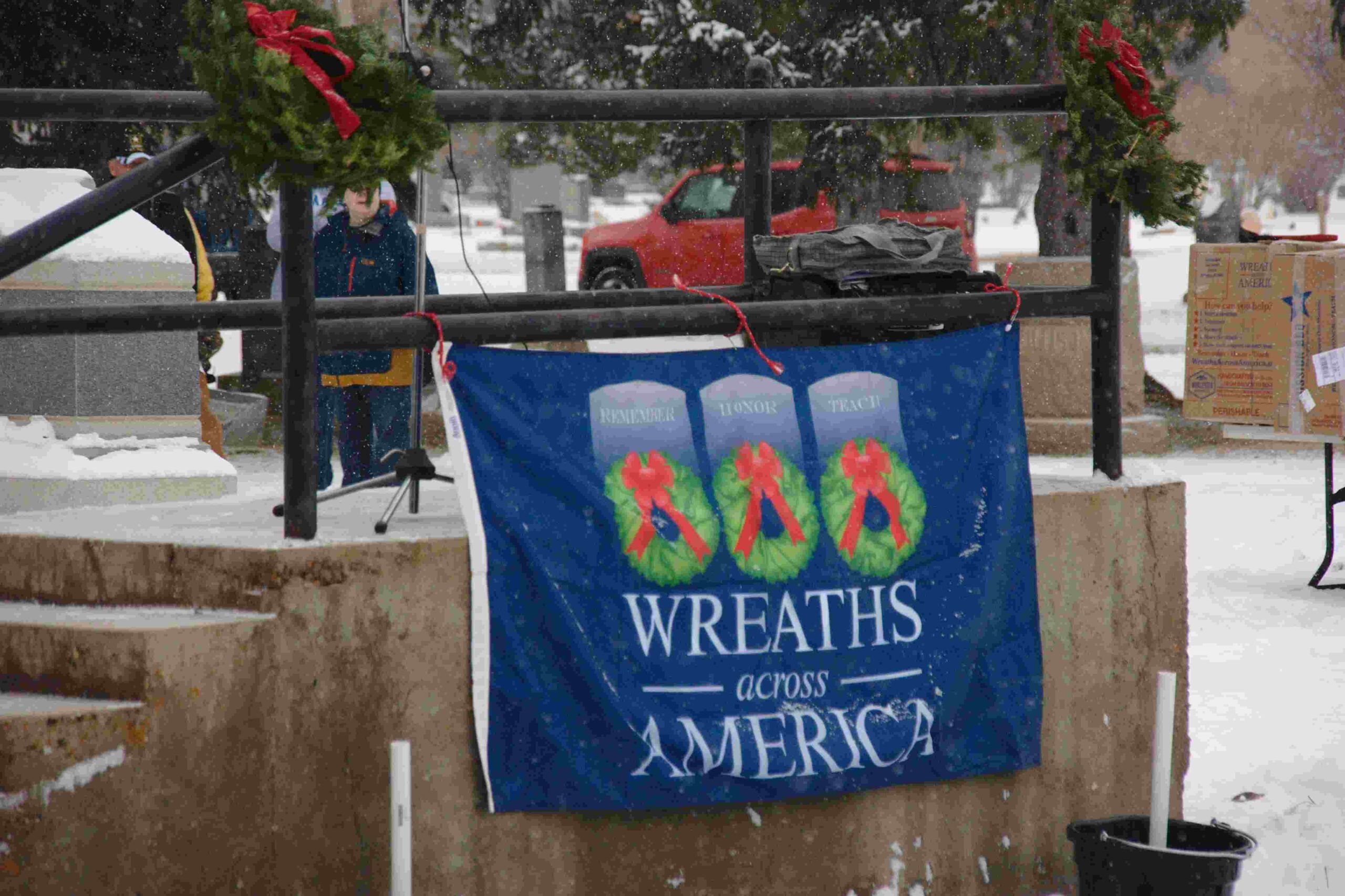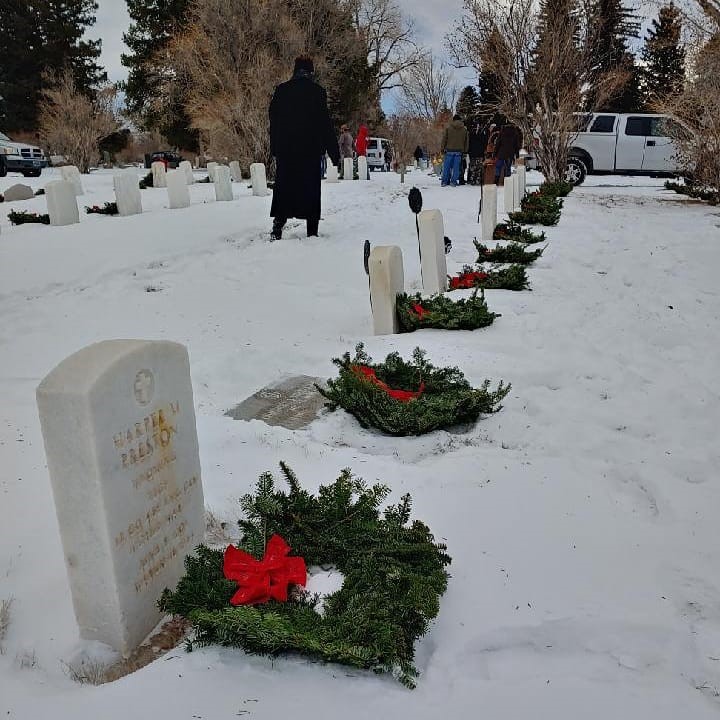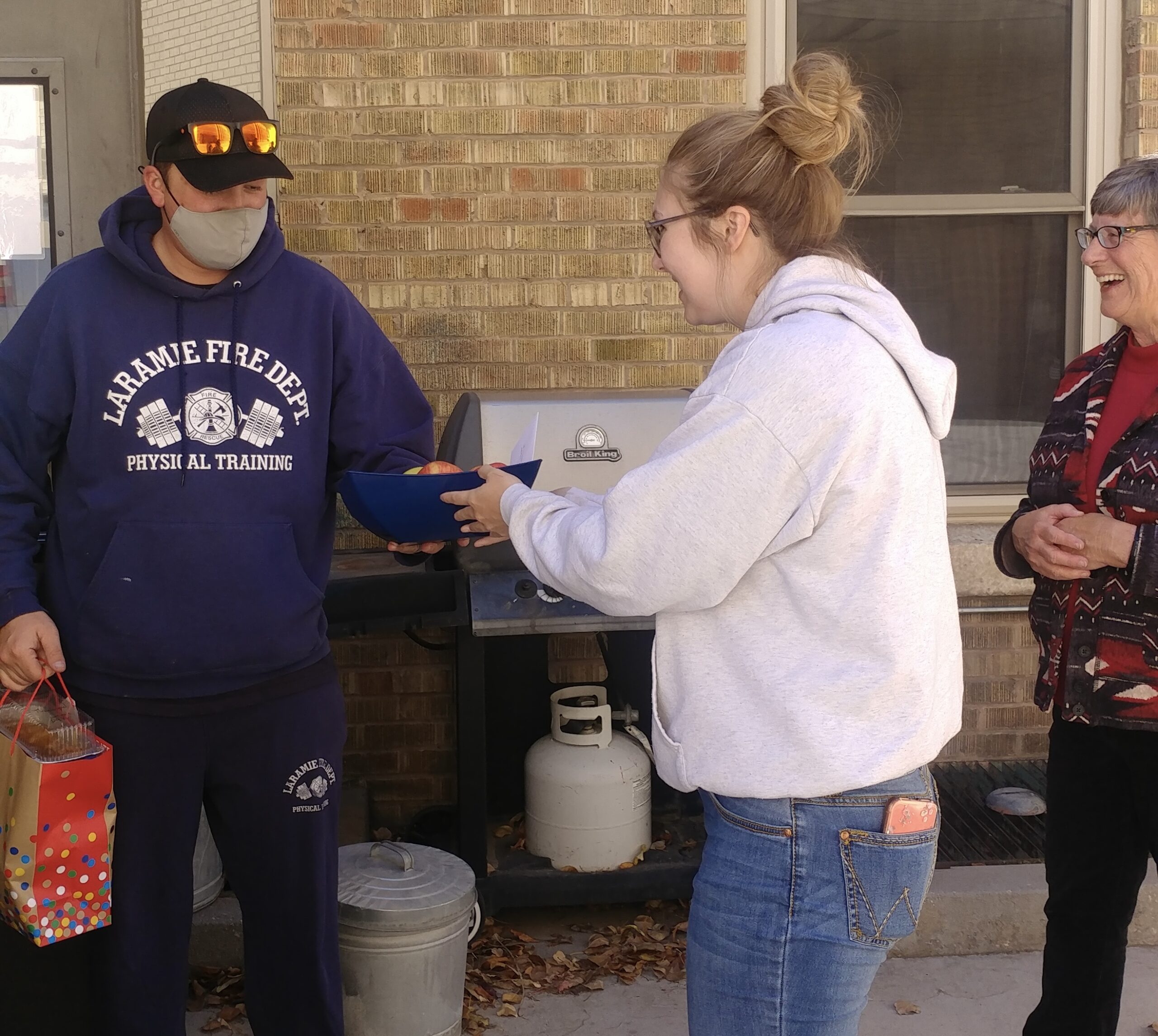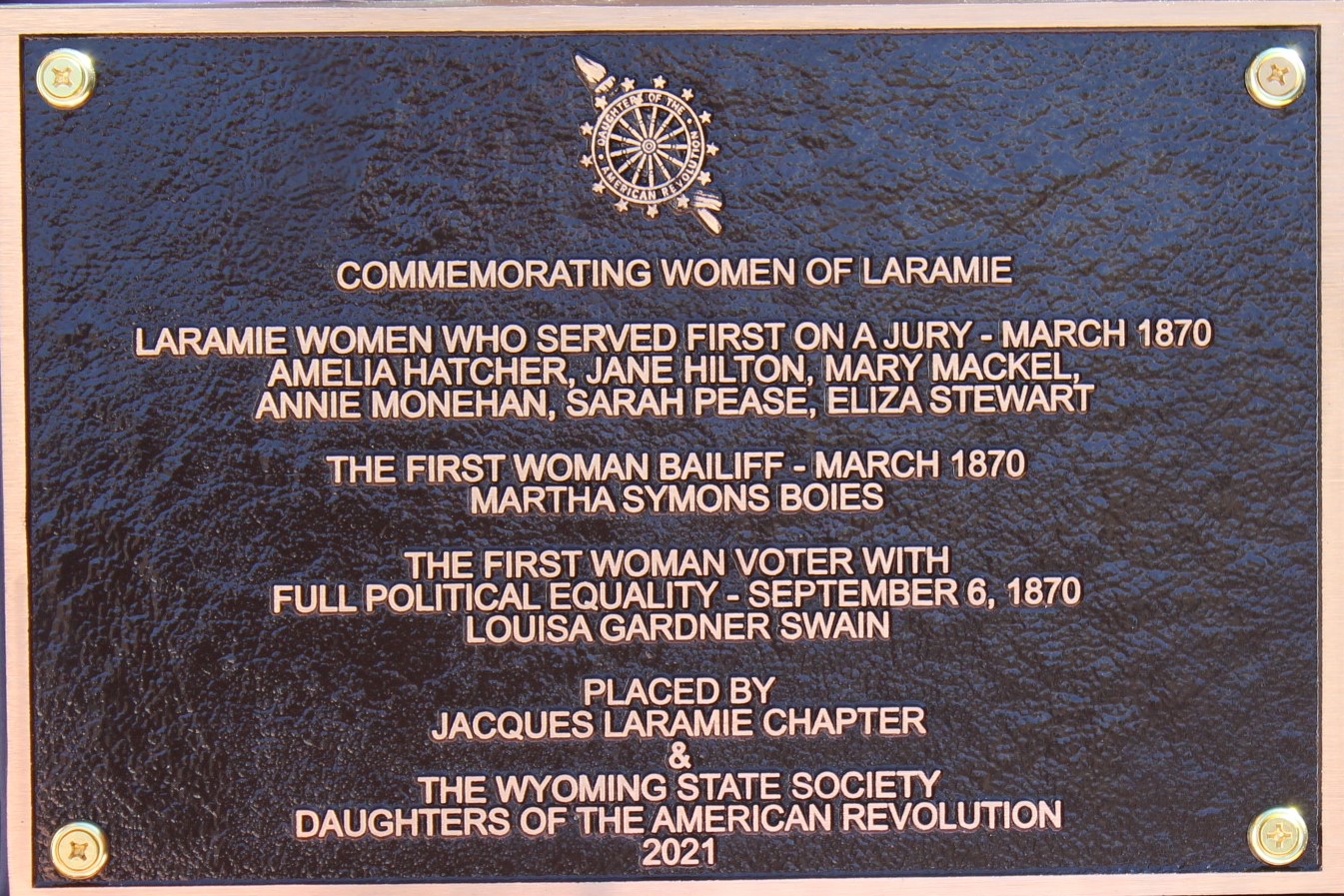
Jacques Laramie Chapter, NSDAR
Laramie, Wyoming
Keeping Traditions Since 1899
As the first National Society Daughters of the American Revolution (NSDAR) chapter organized in the state of Wyoming, Dr. Grace Raymond Hebard, and Mrs. Frances E. Warren founded the Jacques Laramie Chapter, December 16, 1899. The chapter is named after the French Canadian trapper and fur trader Jacques de la Ramee, who explored this area in the early 1800s and acted as an arbitrator between the Indians and Northwestern Fur Company.
Dr. Hebard served as the first woman on the University of Wyoming Board of Trustees. As DAR’s Wyoming State Historian, she helped erect and dedicate historic markers at sites throughout Wyoming, including Oregon Trail landmarks such as Independence Rock; as well as sites on the Bozeman Train and the Pony Express route. Mrs. Warren was the wife of Civil War Medal of Honor recipient Frances E. Warren, who was the first Governor of Wyoming and later a prominent Wyoming senator.
Located in a university town, the chapter stresses education and history, including being an award sponsor for the annual Wyoming History Day contest. Each year the chapter awards DAR Gold ROTC medals to outstanding University of Wyoming Army and Air Force cadets at their spring awards ceremony. The chapter is a Wreaths Across America partner and participates in community events such as the annual Memorial Day remembrance and the Fourth of July community celebration. The chapter is proud of placing six DAR historical markers in Laramie and Albany County, including the newest marker,”Commemorating the Women of Laramie,” located at the Wyoming Women’s History House in downtown Laramie.
With over thirty members, the chapter takes pride in having from their membership the Wyoming State Treasurer; the Northwest Division Vice Chair of Historic Presevation; and one Honorary State Regent.

Like most towns in southern Wyoming, Laramie began as an “end of the tracks” town. Union Pacific railroad tracks reached on May 4, 1868. Scheduled passenger service followed. As the tracks approached, numerous tent houses and log buildings were thrown up so that a fair-sized population was in place when the first train came in.
The community began as a rowdy place, but within a year Laramie had a school, churches, stores, and many permanent residents. Businesses started and the surrounding area was home to cattle and sheep ranching. Eventually the city boasted rolling mills for railroad rails, a railroad tie treatment plant, a brickyard, a slaughter house, a brewery, a glass blowing plant and others. Laramie was one of the first small towns west of the Mississippi to have an electric power plant, built in 1886.
Suffrage was secured for women in Wyoming Territory in December 1869, and Laramie claims the first woman to vote in a general election in the United States – Mrs. Louisa Gardner Swain in 1870. That same year, Laramie also boasts the first jury upon which women served.
Higher education came to Laramie with the establishment of the University of Wyoming (UW). The university graduated its first class of two before Wyoming became a state on 10 July 1890. Today UW is the only four-year public university in the state, and is the city’s largest employer.
Laramie is also the gateway to the Snowy Range Mountains to the West. In addition, with large areas of surrounding public land; tourism and outdoor sports are big draws to the city.

PATRIOTISM

The National Society Daughters of the American Revolution is a partner with Wreaths Across America.
REMEMBER, HONOR, TEACH
Click WREATHS for more information.
Service to America
The Jacques Laramie Chapter conducts volunteer service projects throughout the year. Pictured are volunteers during Service To America Week.
The chapter promotes history and education with displays in the library.

HISTORIC PRESERVATION













 Contact Webmaster
Contact Webmaster